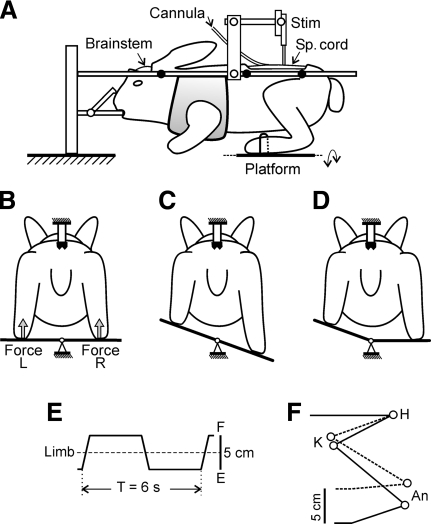Fig. 1.
Experimental design. A: the decerebrated animal was positioned in a rigid frame and its head and vertebral column were firmly fixed. To affect the spinal reflex mechanisms, the spinal cord was stimulated by means of the electrode (Stim) and the drug (quipazine) was injected by means of the intrathecal cannula. The hindlimbs were positioned on the platform, which could be periodically tilted in the frontal plane. B and C: tilt of the platform caused flexion of one limb and extension of the other limb. The contact force under each limb was measured by the force sensor (Force). D: the left and the right parts of the platform could be tilted independently. E: trajectory of the foot movement. F: limb configuration at the 2 extreme platform positions (H, K, and An: hip, knee, and ankle joints, respectively).

